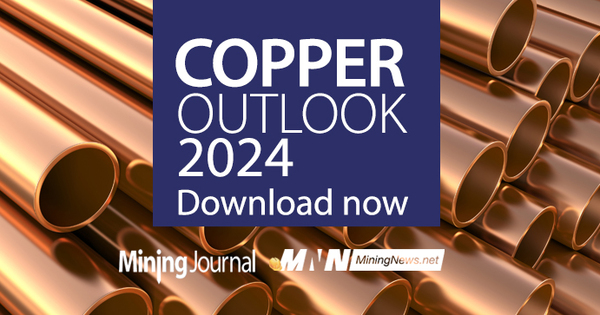Global copper markets are showing divergent indicators in 2024, with industry experts projecting a 5% price increase throughout the year as persistent supply constraints collide with accelerating demand for metals critical to the energy transition.
Market analysts point to unexpected developments that have tightened supply conditions more rapidly than initially forecast, catching many investors off guard and reshaping investment strategies across the mining sector.
A series of operational closur
...
Global copper markets are showing divergent indicators in 2024, with industry experts projecting a 5% price increase throughout the year as persistent supply constraints collide with accelerating demand for metals critical to the energy transition.
Market analysts point to unexpected developments that have tightened supply conditions more rapidly than initially forecast, catching many investors off guard and reshaping investment strategies across the mining sector.
A series of operational closures at key copper-producing sites has exacerbated existing supply pressures, according to industry observers tracking global metal flows. These disruptions, coming at a time when warehouse inventories were already declining, have intensified concerns about copper availability in the near term.
Meanwhile, India’s aggressive urbanization drive has emerged as a significant demand catalyst that many market participants had underestimated. The country’s infrastructure expansion and manufacturing growth are consuming substantial copper volumes, adding another layer of complexity to the global supply-demand equation.
“The combination of these factors is creating tighter market conditions than we anticipated even six months ago,” said one industry analyst who requested anonymity because they weren’t authorized to speak publicly. “The market is recalibrating expectations for both pricing and availability through 2024 and beyond.”
Mining Journal and Mining News.net have released their third annual Copper Outlook report, providing comprehensive analysis of the forces shaping copper’s market trajectory in 2024. The publication examines whether current conditions could propel copper prices beyond their historical peak and identifies promising development projects worthy of investor attention amid the commodity’s upward price momentum.
The energy transition continues to serve as a fundamental driver for copper demand. Electric vehicles require approximately four times more copper than conventional internal combustion engine vehicles, while renewable energy infrastructure and grid modernization projects consume significant quantities of the metal.
“Copper sits at the intersection of several powerful global trends,” noted a commodities strategist at a major investment bank. “Electrification, decarbonization, and infrastructure renewal all point to sustained demand growth, while the supply side faces persistent challenges in bringing new production online.”
Geological challenges at aging mines present another constraint, as copper grades continue to decline at many long-established operations. Several major producers have reported lower recoveries than projected, forcing companies to process more ore to maintain output levels.
The geopolitical landscape adds further complexity to copper’s outlook. Chile and Peru, which together account for approximately 40% of global copper production, continue to navigate regulatory and political changes that create uncertainty for mining operators and investors alike.
In Chile, the world’s largest copper producer, water scarcity issues are compelling mining companies to make substantial investments in desalination plants and alternative water management systems, raising production costs and complicating expansion plans.
Investment in new copper projects has remained below levels needed to meet projected demand growth, creating what some analysts describe as a structural deficit that could persist through the decade. The average timeline from discovery to production for new copper mines now exceeds 15 years, meaning that even accelerated investment today would take considerable time to impact supply.
Financial institutions have noted increasing interest from investors looking to gain exposure to copper’s potential upside. Exchange-traded funds focused on copper miners have seen significant inflows in recent months as portfolio managers reposition to capitalize on anticipated price strength.
“We’re seeing a marked shift in how investors approach the mining sector,” said a fund manager specializing in natural resources. “There’s growing recognition that the traditional cyclical view of copper may be giving way to a more structural, long-term growth story tied to global electrification.”
Chinese demand remains a crucial variable in copper’s outlook, with the country’s property sector challenges potentially offsetting growth in manufacturing and infrastructure spending. However, China’s commitment to renewable energy and electric vehicle production continues to support copper consumption despite broader economic headwinds.
As copper’s supply-demand dynamics evolve throughout 2024, market participants will be closely monitoring inventory levels, production disruptions, and policy developments affecting both supply and demand. The metal’s price performance will serve as a bellwether for the broader commodities complex and provide insights into the pace of the global energy transition.
The Copper Outlook report aims to equip investors and industry stakeholders with the comprehensive analysis needed to navigate these complex market conditions and identify opportunities amid shifting fundamentals.


